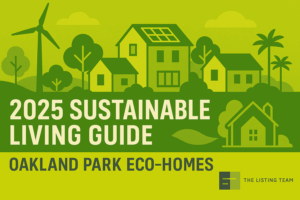Adapting Retail Real Estate to New Consumer Demands


In recent years, consumer behavior has undergone a significant transformation, driven largely by the digital age’s advances. The shift toward online shopping, fueled by the desire for convenience and instant accessibility, has placed new demands on the retail real estate industry. As consumer expectations evolve, so too must the strategies employed by retailers to remain relevant and competitive. By understanding this evolution and tracking which retail brands are keeping up with the rapid pace of change, commercial real estate investors can better evaluate potential risk, while developers can be prepared to address the needs of these retailers now and into the future.
Changing consumer behaviors
The rise of e-commerce has dramatically reshaped shopping habits, with third-quarter 2024 reporting showing e-commerce sales as 16.2 percent of total retail sales. Consumers now expect to browse and purchase products from the comfort of their homes, with fast delivery times to match. This digital shift emphasizes the need for retailers to innovate and adapt their physical spaces to complement their online presence.
For in-store shopping, the trend toward experience-driven purchases is gaining momentum. Consumers are increasingly valuing the experiences associated with their purchases, such as interactive product demonstrations or engaging store environments, over mere transactions. Shoppers are also seeking personalized interactions that cater to their unique preferences, with customized recommendations and tailored services becoming critical for creating lasting connections with brands.
READ ALSO: You Stayed Alive Until ’25. Now What?
Impact on retail real estate
These changing consumer behaviors have profound implications for investors and developers, as well as physical real estate assets. One example is the growing trend in urban areas for smaller retail spaces that offer unique and personalized experiences, catering to a more localized clientele. Whole Foods recently announced their “Daily Shop” concept would launch in New York City neighborhoods, offering a curated selection of goods and local specialties. Dollar General rolled out their “DGX” urban format several years ago to address shifts in consumer behavior and reach additional customers.
In addition to retailers seeking out smaller locations in new markets, the evolving needs of modern retailers are also prompting changes in retail real estate design. Investors may need to allocate more tenant improvement dollars to support technology-driven buildouts–a necessity in creating smarter, more connected stores that enhance customer experiences.
The rise of multiple drive-thrus and dedicated mobile order pick-up areas in quick service restaurants and retail spaces is reshaping site planning as well. Target, Walmart, Dick’s Sporting Goods, Kroger, Taco Bell and many more tenants across a variety of retail categories now offer mobile ordering and curbside pick-up, with these services regularly requiring dedicated parking areas or store modifications to accommodate order fulfillment. As new stores are built, retailers may demand larger footprints or reconfigured layouts in order to prioritize efficiency and convenience for consumers who value speed and seamless service.
Examples of successful adaptations
Many retailers have already begun adapting with great success. For instance, Nordstrom has embraced a digital strategy and transformed its retail spaces to focus on consumer experiences. By incorporating interactive exhibits and hosting exclusive events, the brand has seen a marked increase in customer engagement and foot traffic, reporting a more than 30 percent month-to-month increase in May 2024.
Macy’s is rethinking their customer journey as well, announcing the expansion of their small format concept that complements their omnichannel experience. Additionally, Kohl’s announced a partnership with Sephora in 2020, and plans call for all Kohl’s locations to eventually include a “store within a store” Sephora, which has been highly successful in increasing foot traffic.
As mentioned, incorporating double and triple drive-thru lanes have also been successful strategies for many restaurant brands. Popularized by chains including Chipotle, Chick-fil-A, McDonald’s and Starbucks, to name a few, restaurants are able to serve more customers faster and more efficiently. By adding a second drive-thru lane, one A&W restaurant franchisee in Wisconsin saw sales increase by 40 percent.
A look to the future
From quick-service restaurants and grocery stores to auto parts retailers and more, retail real estate will see continued growth in technology-driven spaces. Innovations such as artificial intelligence will continue to enhance and improve the shopping experience, and the importance of community-centric retail will also rise, as consumers seek meaningful connections with brands and local environments.
Retailers must remain agile and innovative, constantly adapting to emerging consumer trends in order to survive and compete. The brands who are successful in turning these challenges into opportunities will see growth and longevity in the future retail world, and savvy investors will be watching closely. Failing to monitor these shifts could leave investors exposed to brands that are falling behind, increasing the likelihood of financial losses caused by shrinking operations or closures.
Daniel Herrold, Senior Vice President at Northmarq
The post Adapting Retail Real Estate to New Consumer Demands appeared first on Commercial Property Executive.





